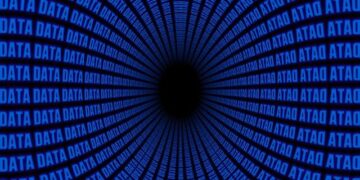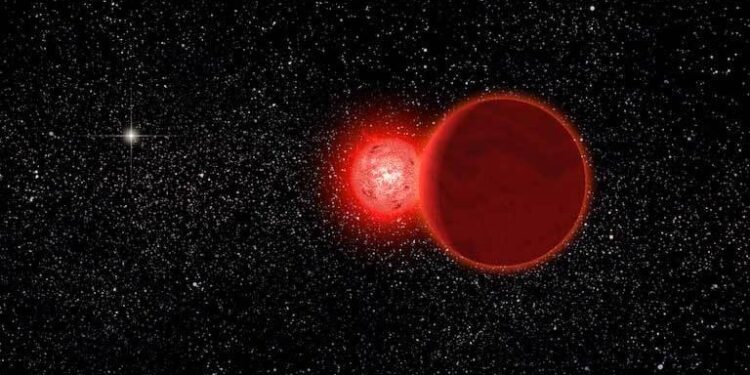A Passing Star Could Flung Earth Out of Orbit – Science News
In an intriguing twist of cosmic fate, scientists warn that a close encounter with a passing star could potentially disrupt Earth’s stable orbit around the sun. Although such events are exceedingly rare, the implications of even the slightest gravitational interaction are significant for our planet’s future. Researchers at the [Insert Institution/University Name], after analyzing simulations of stellar trajectories, have uncovered that a star passing within a fraction of a light-year could exert enough gravitational influence to alter Earth’s path in the solar system. As astronomers continue to explore the dynamics of our galactic neighborhood, this unsettling possibility raises urgent questions about the resilience of the planets and the delicate balance that governs their orbits. In this article, we delve into the science behind these findings, what it could mean for Earth, and the potential scenarios if our planet were to experience such a celestial upheaval.
Potential Cosmic Threats from Passing Stars Investigated
In a recent study, astrophysicists have focused on the potential hazards posed by rogue stars that venture too close to our solar system. These stars, which could pass through at relatively high velocities, might disrupt the delicate gravitational balance that keeps Earth in its orbit around the Sun. The research highlights several intriguing scenarios, emphasizing that a close encounter could lead to drastic changes in the orbits of planets in our solar system. The scientists used advanced simulations to model how these encounters might unfold, showcasing a range of outcomes, from minimal changes to catastrophic shifts.
Key findings from the study suggest that the following factors contribute significantly to the severity of a star’s impact on our solar system:
- Velocity of the passing star: Faster stars pose a greater risk due to their kinetic energy.
- Mass of the star: More massive stars have a stronger gravitational pull, increasing the likelihood of disruption.
- Distance of closest approach: The nearer the star comes to the Sun, the more pronounced the gravitational effects could be.
| Distance from Sun (light-years) | Potential Impact |
|---|---|
| 1 | Minor orbital eccentricity |
| 0.5 | Planetary orbit changes |
| 0.1 | Possible ejection from solar system |
Understanding these cosmic threats is crucial as it raises awareness about the dynamic nature of our universe. While a close encounter with a passing star is unlikely, researchers argue that being prepared and monitoring stellar activities could aid in safeguarding our planet’s future. Continuing to refine predictive models will help scientists evaluate how many more encounters could lie ahead—and their potential fallout.
Understanding the Mechanics of Orbital Disruption
When a star passes near our solar system, the gravitational influence it exerts can significantly affect the orbits of nearby celestial bodies, including Earth. This phenomenon occurs due to the interplay of gravitational forces, which can either stabilize or destabilize an orbit. The mechanics behind orbital disruption involve complex calculations of mass, distance, and velocity, leading to outcomes that range from minor orbital adjustments to catastrophic ejections from the solar system. Key factors influencing these events include:
- Proximity: The closer the star, the more pronounced the gravitational effect.
- Mass of the star: A more massive star exerts greater gravitational pull.
- Existing orbital trajectories: The current paths of celestial bodies play a crucial role in determining potential outcomes.
Potential scenarios resulting from such interactions can vary widely, from minor shifts in an orbit to a complete ejection from the solar system. While the probability of a star approaching closely enough to disrupt Earth’s orbit is low, scientists emphasize the importance of understanding these dynamics. A study of historical data on stellar encounters reveals several noteworthy instances of orbital changes that could serve as precedents for future events. The table below summarizes some of these encounters:
| Star Name | Distance (light years) | Orbital Effect |
|---|---|---|
| Gliese 710 | 63 | Potential perturbation of Oort Cloud |
| Proxima Centauri | 4.24 | Minimal risk to terrestrial orbits |
| Bernard’s Star | 5.96 | Theoretical impact on outer planets |
Expert Recommendations for Monitoring Stellar Movements
As the cosmos continues to unfold its mysteries, experts emphasize the critical need for enhanced monitoring of stellar movements. Researchers suggest that implementing a multi-tiered observation strategy could significantly improve our understanding of potentially hazardous celestial bodies, such as rogue stars or massive asteroids. This strategy includes:
- Advanced Telescopes: Upgrading existing observatories with state-of-the-art technology for higher resolution imaging.
- Collaborative Networks: Establishing global partnerships among space agencies and astronomical institutions for data sharing and joint research efforts.
- Predictive Modeling: Developing sophisticated algorithms to simulate stellar trajectories and predict potential impacts on Earth’s orbit.
In addition to these methods, experts also highlight the importance of engaging the public and educational institutions in astronomical observation. Providing resources and training can inspire the next generation of astronomers to contribute to this vital field. A recent initiative includes:
| Program | Description |
|---|---|
| Star Watch | Community-driven stargazing events to observe celestial movements. |
| Astro Mentorship | Pairing students with professional astronomers for hands-on learning. |
To Wrap It Up
the potential threat posed by a passing star to Earth’s orbit serves as a stark reminder of the dynamic and often unpredictable nature of our universe. While the likelihood of such an event occurring remains extremely low, the implications of a gravitational disturbance could be catastrophic, emphasizing the importance of continued astronomical research and monitoring. As scientists refine their models and enhance our understanding of celestial mechanics, the need for preparedness against cosmic events becomes increasingly crucial. As we look to the skies, it is a reminder that the balance of our existence can be influenced by forces far beyond our control. We will continue to monitor these developments and provide updates as they unfold in the realm of astronomical science.































